Little Malmaison
Inside the private home once the luxurious pavilion in Empress Joséphine’s famous garden
Hi! Welcome to Emerald City, a newsletter for those who want an inside view of the world’s greatest interiors and design styles. If you enjoy this post, please like it to help me with the algorithm. I publish my newsletter about twice a month. My posts are free, although I am grateful for the support that I receive from my paid subscribers, because (let’s be real) this takes work. Annual subscriptions are $30, making them 50% less than the average Substack rate.
As I trudged up a muddy overgrown path, a downtrodden mansion with flaking white paint surrounded by broken garden statuary emerged from the trees. Looking at it, I sighed long and hard hoping my forthcoming lunch would begin and end quickly. I was quite eager to get to the afternoon’s tour of the Château de Malmaison, as Josephine Bonaparte’s nearby home was a mecca of sorts for interior design nerds like myself. But first my fellow travelers and I, members of the Decorative Arts Trust, had to get through the midday meal which at times drags on, convivial as they may be. We are often offered elegant repasts by the hosts of groups like mine as a means of maintaining their family’s grand homes.
The house itself—and its incredible history—more than made up for the marathon luncheon. With my first step over the threshold, I was transported to another place and time by an overwhelmingly pervasive wistful and nostalgic atmosphere. “Love among the ruins” !
The interiors evoked a shrine of sorts to the great romance between Joséphine and Napoleon, decorated as it was in high Empire style. What was this place, I asked myself? Officially dubbed the Château de la Petite Malmaison, it was far too small to be a “stately home” of any type I had ever seen before, and I have seen a lot of them. (You can too if you click on some of my past posts.) I knew nothing about the structure’s backstory—only that it was conveniently around the corner from that afternoon’s main event.
While the food may not have been quite as great as is the norm on these Trust junkets, the decor of our luncheon venue was marvelous. The entrance hall’s pale green-gray walls were enhanced by picture frame moldings picked out in gold and classical motifs hand-painted in grisaille. Underneath a glimmering gold and crystal chandelier were floors in a rich parquet with highly detailed inlays. A large portrait of Napoleon hung over a gilded console. Directly opposite the front door was a semicircular rotunda furnished with a majestic suite of Empire period furniture so perfect in its styling that it could be used to illustrate the period in a design history textbook.
From the entrance, the group and I proceeded through a small anteroom and entered a large rectangular banquet hall flanked by columned gates. The banquet hall, primarily furnished with tables for our lunch, was lined with French doors flung open to the outdoors. A massive crystal chandelier sparkled overhead shining on more gilded moldings, with the shimmering effect enhanced by the oversized mirrors hung on the walls. A bust of Joséphine held a place of honor, and smaller more intimate seating areas were arranged next to the French doors to allow for a direct view to the grounds. At the far end, a man tickled the keys of a grand piano to serenade us with classic French melodies.
Adjacent to the banquet hall were rooms that echoed those at nearby Malmaison. The floors were a black and white marble checkerboard similar to the ones seen on the main level of the much bigger château. The walls also recalled Malmaison as they were adorned with hand-painted neoclassical decorations framed in terracotta, that recalled the Pompeiian wall decorations in Malmaison’s dining room. Lace curtains gently wafted in the breeze seemingly in time with the music being played nearby. It was good thing I had no interest in the protracted luncheon because I had time to run around and snap photos.
While the interiors were undeniably dreamy, the origins of the structure struck me as even more romantic. As it turns out, I was having lunch in the only surviving space of Empress Josephine’s almost mythical greenhouse complex that formed the centerpiece of her legendary gardens. Constructed in 1805 by landscape architect Jean-Marie Morel (later succeeded by Jean Thomas Thibault and Barthélemy Vignon), the greenhouse held the empress’s collection of exotic plants. A precursor to the massive glass and metal structures that became more prevalent in the mid-19th century (Think Prince Albert’s fabled Crystal Palace), it was huge and could accommodate 16 foot trees. Josephine often led her guests through her gardens to the greenhouse to show off the tropical species that reminded her of her birthplace, the island of Martinique. To keep the plants thriving, the glass structure was heated by 12 stoves.
Attached to the greenhouse was a pavilion for entertaining. To decorate it, Josephine commissioned the top artisans of her day, including cabinetmaker Jacob Desmalter, marble mason Gilet (for those floors) and Louis-Martin Berthault, who helped her redecorate Malmaison after her divorce from Napoleon. While the greenhouse portion of the complex was destroyed in 1827 due to its high maintenance costs, the pavilion survives today as the private home of Stefan Czarnecki, the son of an exiled Polish count who purchased it in 1947. It was from the semicircular rotunda in Stefan’s entrance hall (mentioned above) that Joséphine’s guests could rest while they continued to view the rare plants in the adjacent greenhouse. Joséphine often served her guests tea in the same pavilion where I had picked at the obscure morsels served at lunch!
After our meal, Stefan offered to walk us to Malmaison. We cut through his back garden and down the private street of an upscale residential development, the same path he said that was frequently taken back in the day by Joséphine and her cohorts. Along the way, Stefan showed us a print of the pavilion as it looked with the greenhouse intact and pointed out several other garden follies that were once part of Malmaison’s original grounds.
Stefan explained that Joséphine was an avid gardener her whole life. While she was still married to Napoleon, foreign politicians, hoping to curry favor with her husband, knew that a gift of a botanical species native to their home country would be well received by the Empress. Helped by this practice, Joséphine went on to introduce 200 new plant species to France, including over 250 new roses, many of which were memorialized by Pierre-Joseph Redouté. I also learned that she acquired an exotic menagerie of kangaroos, emus and black swans that freely roamed Malmaison’s grounds. While the other animals did poorly in the European climate, the black swans thrived. In fact, the swan became Joséphine’s emblem and a bevy of black swans remain at Malmaison today.
As Stefan bid us a charming goodbye at the gates of the Château de Malmaison, I chuckled at my earlier grumpiness over time wasted on dining. Little Malmaison was an enchanting surprise. Sometimes, a meal’s setting is more exciting than the food.
Bon voyage,
Lynn
Photography
All photography by Lynn Byrne. First image above is my first glimpse of Little Malmaison.
Entrance Hall
Below, the entrance to the greenhouse was once directly opposite this semicircular rotunda.
Anteroom
Banquet Hall
Rooms Adjacent to the Banquet Hall
Exterior
Below, an outside look at the semicircular rotunda.
Below, the back garden.
Below, originally this doorway led to the greenhouse. It is where we entered the pavilion.
Greenhouse and a surviving garden folly, the Temple of Love.
Above, no this is not a sketch of a set for Bridgerton but rather a watercolor (1823) by Auguste Garneray showing the inside of the greenhouse.
Below, a model of the greenhouse and pavilion.
Below, Stefan showing a picture of the greenhouse complex as constructed, followed by a close-up.
The greenhouse structure depicted on an urn in the collection of the Château de Malmaison.
The Temple of Love, one of the extant garden follies, followed by a painting of it on view at Malmaison entitled “The Rose of Malmaison” by Jean Louis Victor Viger du Vigneau, c. 1867.
Click on the video to hear the music I heard at lunch. Très romantique!
Post Scriptum
IKYMI, here is my newsletter on the Château de Malmaison.
I am departing for England for new adventures with the Decorative Arts Trust on June 3, with stops (among others) at Hampton Court Palace, The Royal School of Needlework, Kew Gardens, Strawberry Hill and Kelmscott Manor (the home of William Morris). I wonder what surprises await? You can follow along in real time on Instagram, especially in my Stories.
These sneakers look great with business casual clothes, are an easy on/off in airports and on planes, and I can stand all day on the hard stone floors of stately homes and truck through wet walled gardens without fear of ruining them. 10/10 recommend with no affiliate marketing kick backs.
Cooking these chops for dinner. The Italian-inpired Pompeii detailing at Little Malmaison got me in the mood for porchetta. Who else loves Melissa Clark?


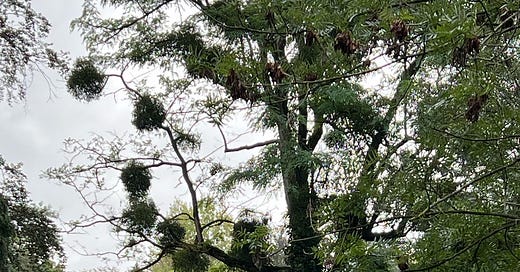



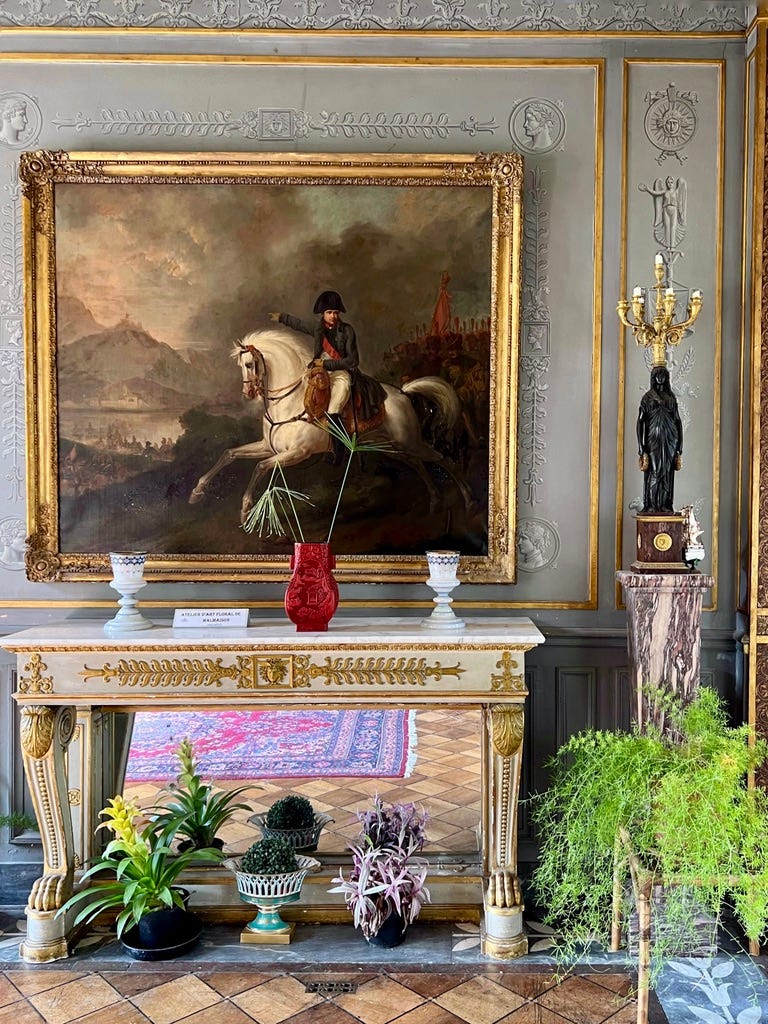
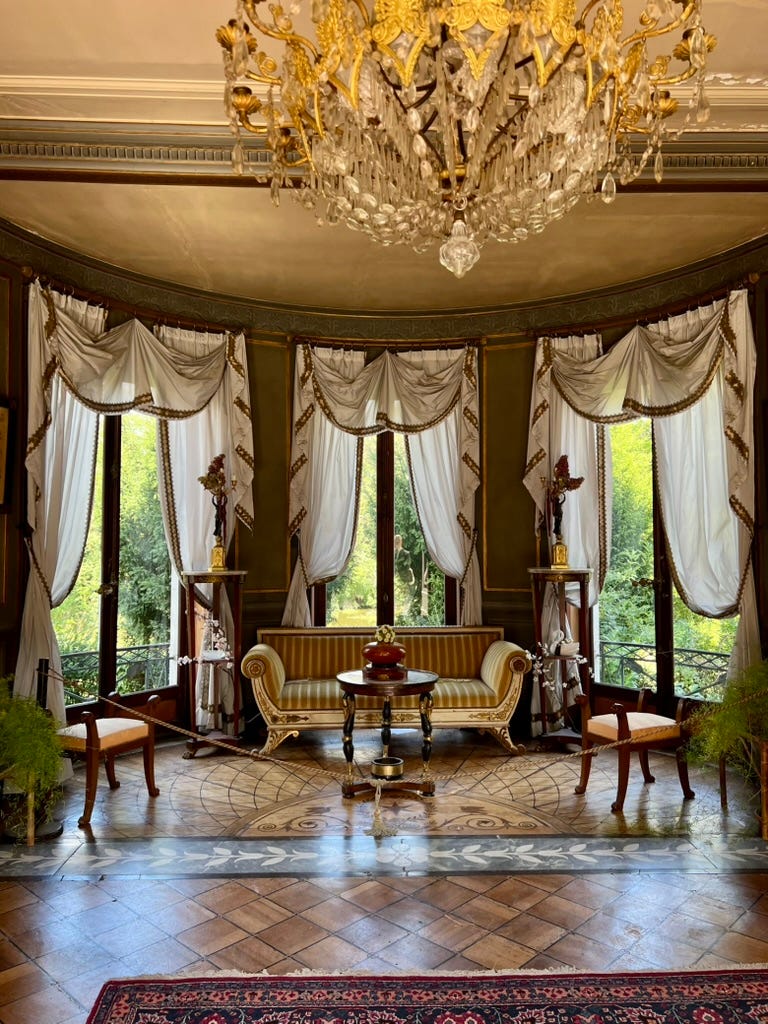
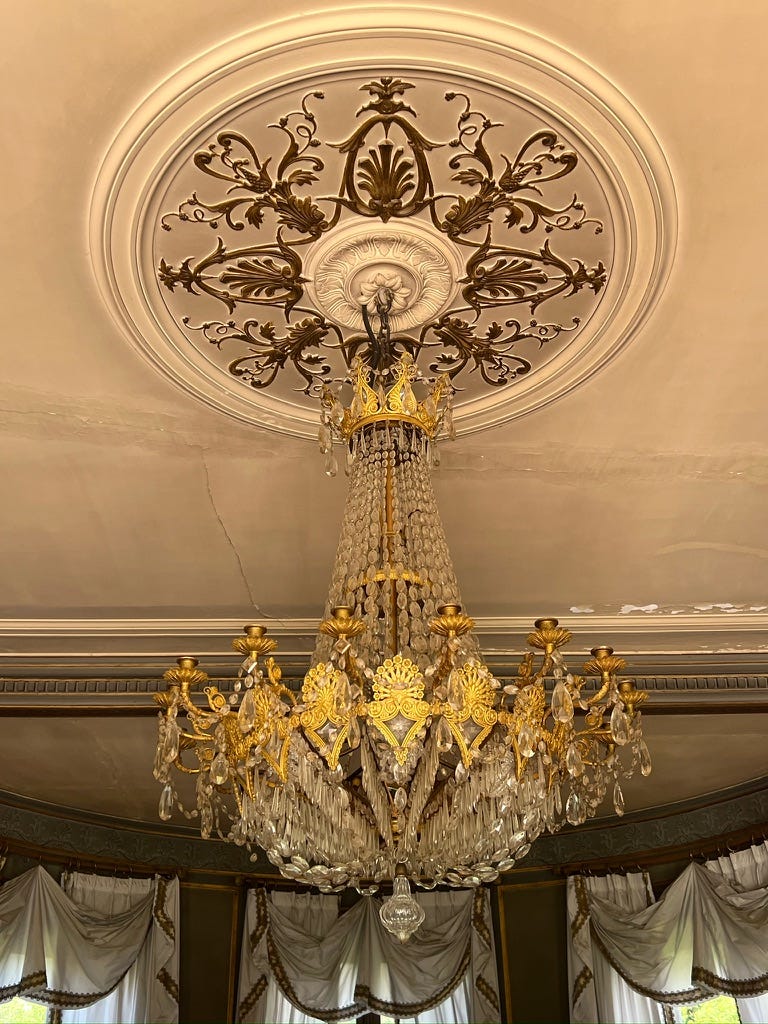
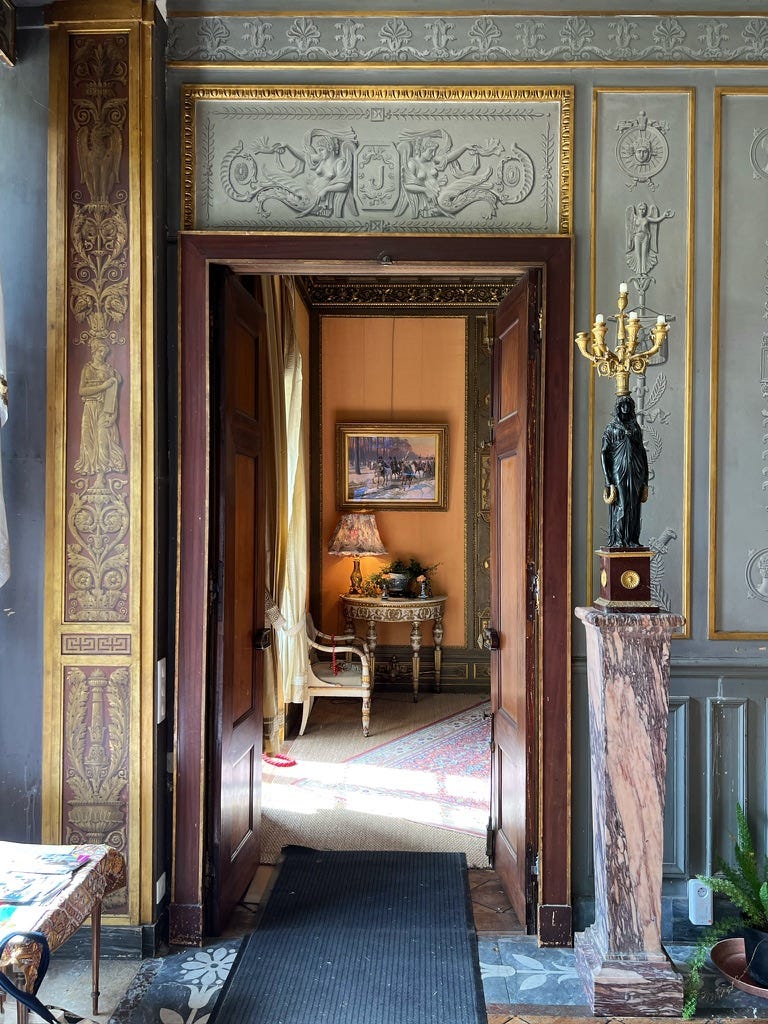
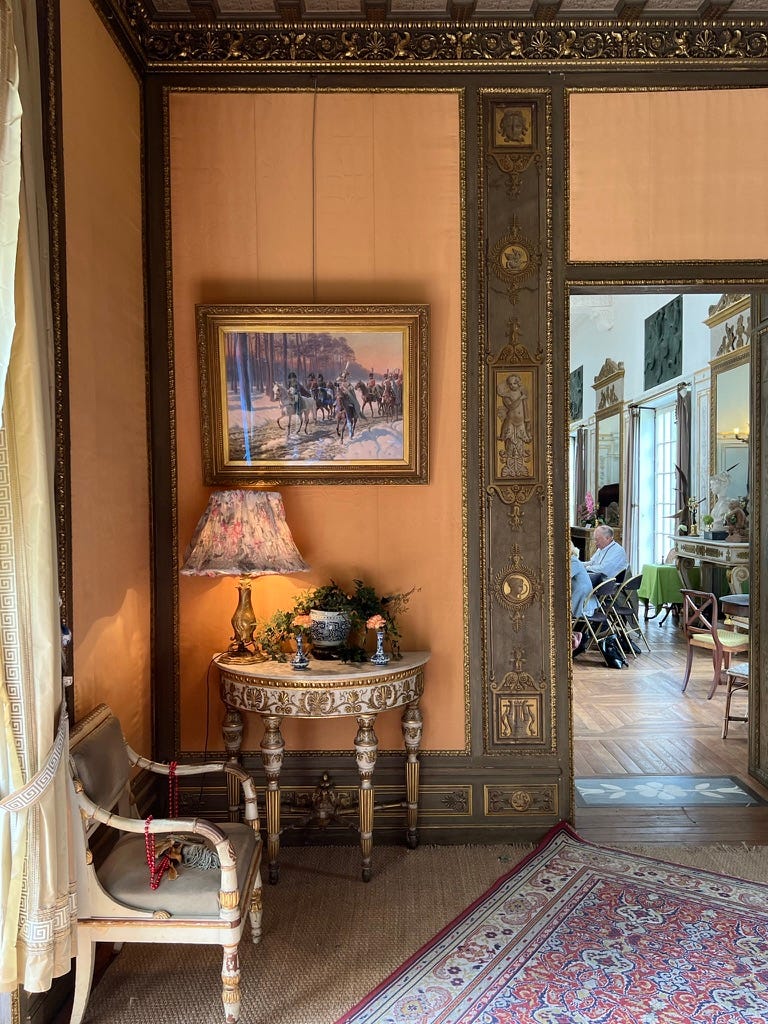

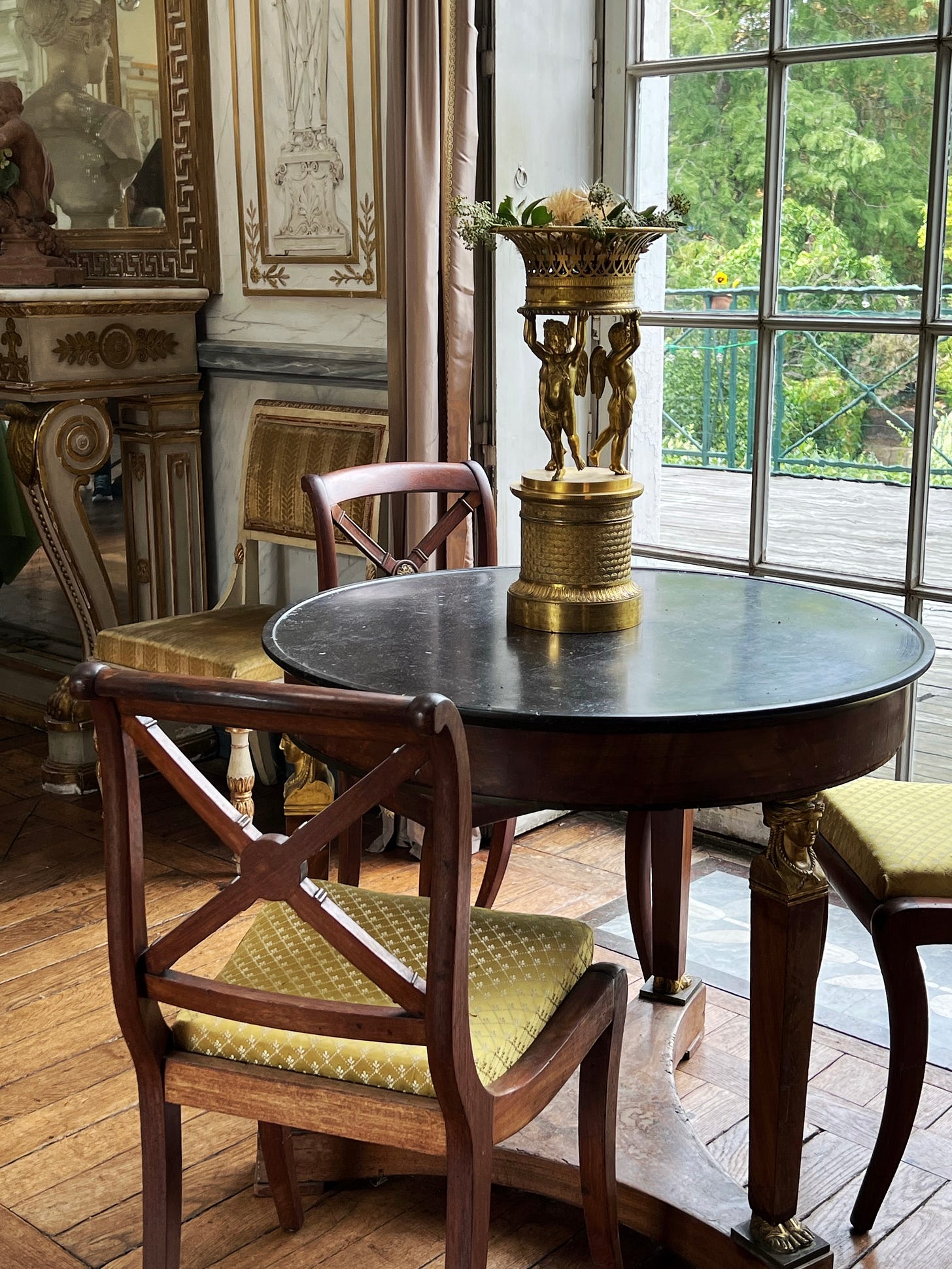

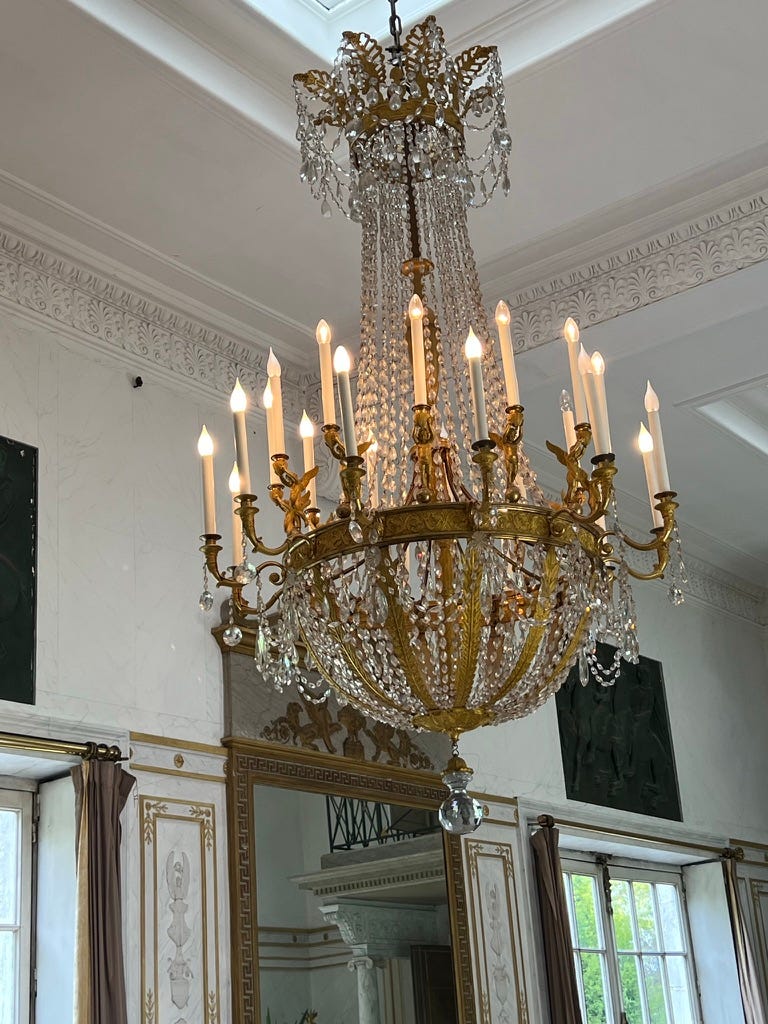
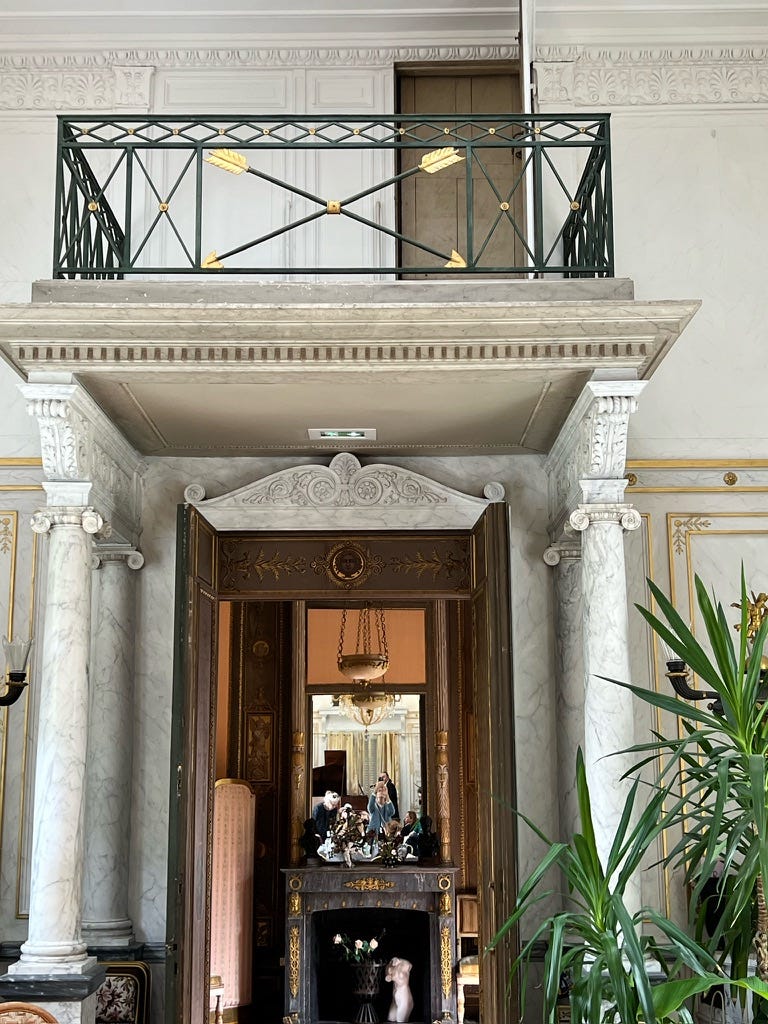
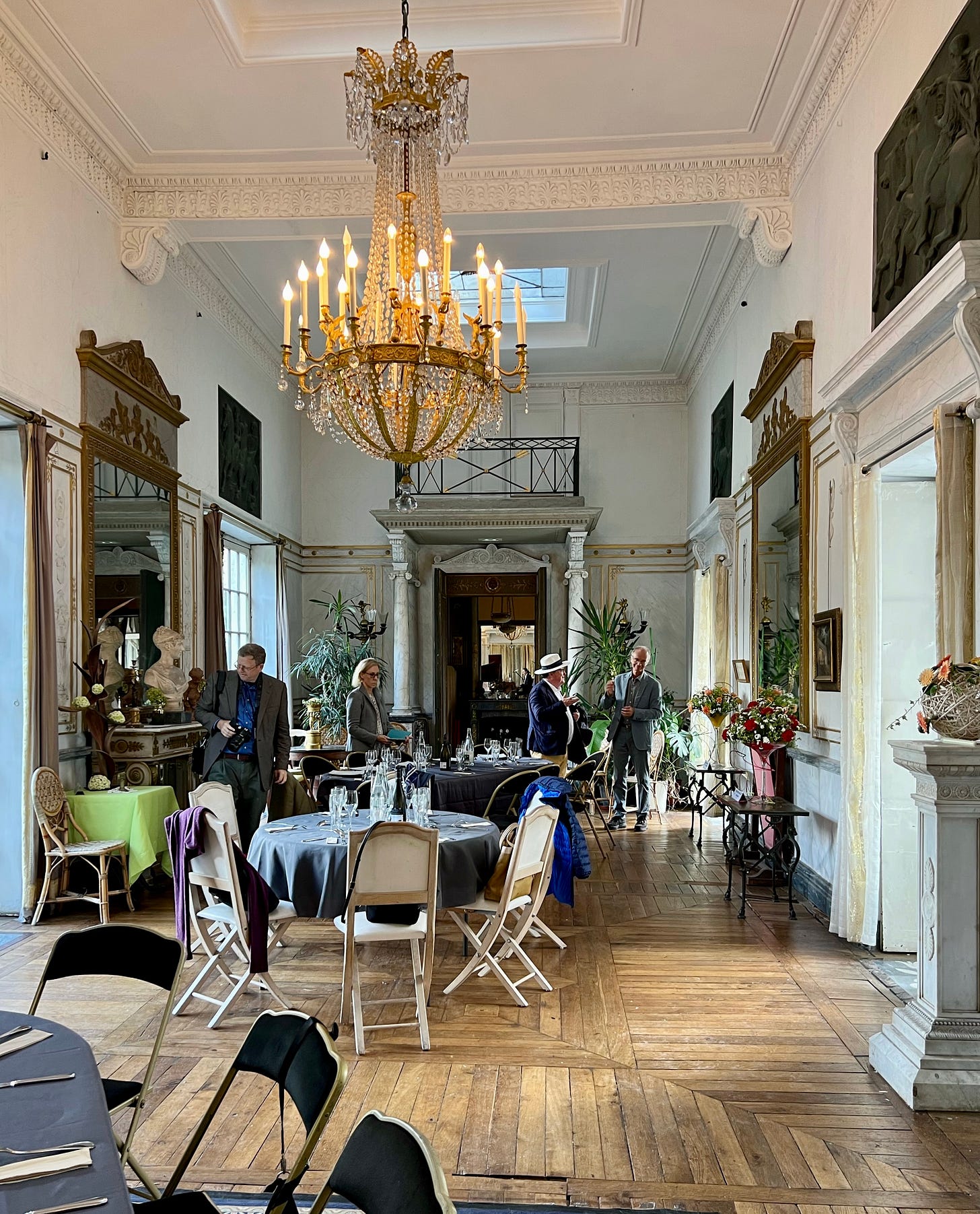


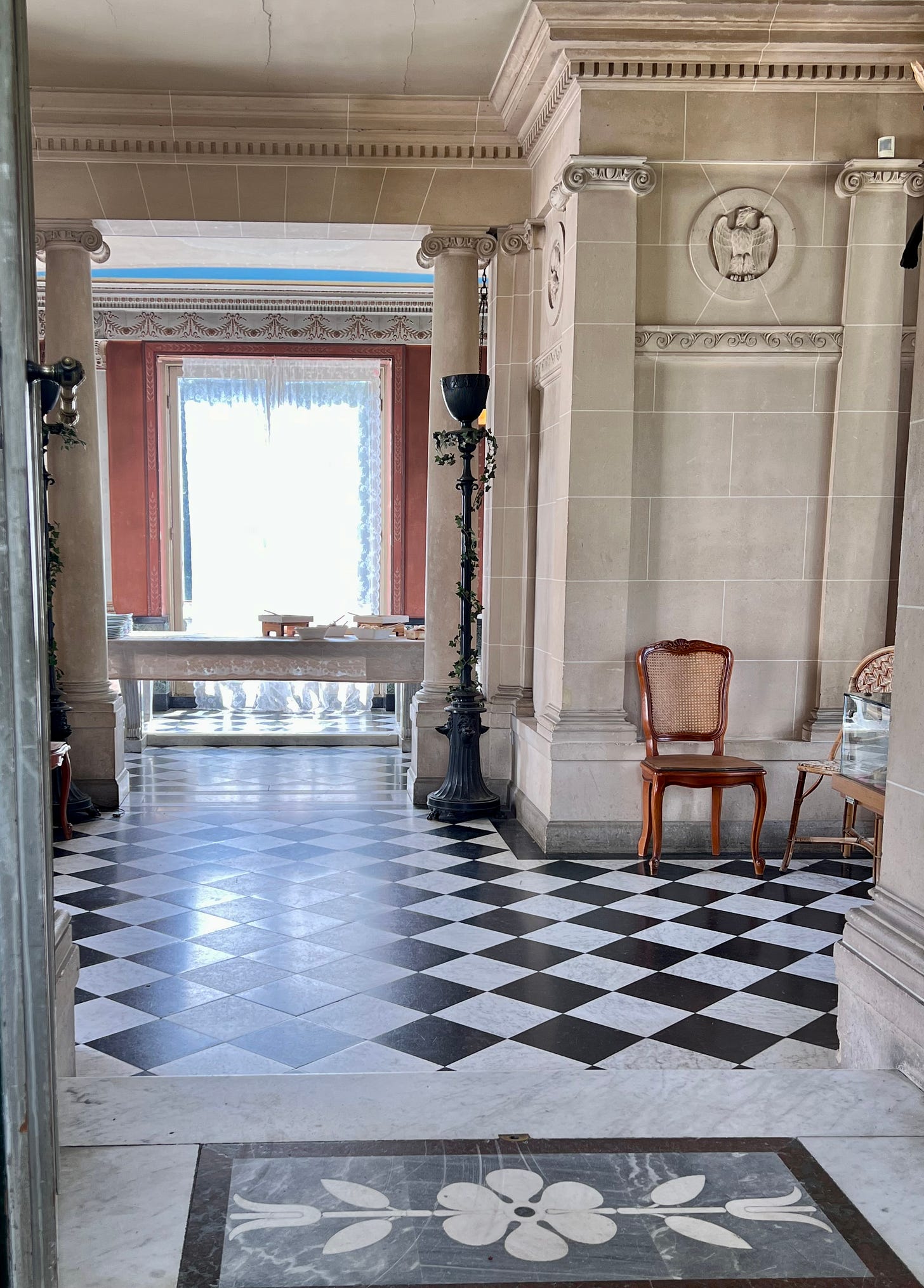
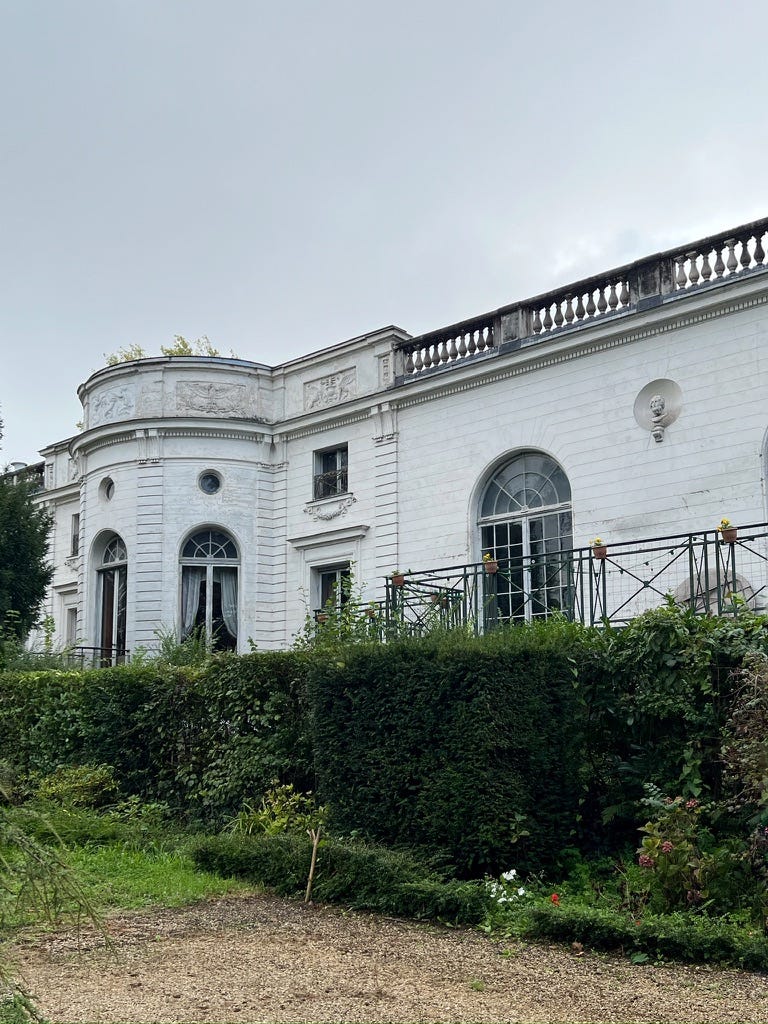
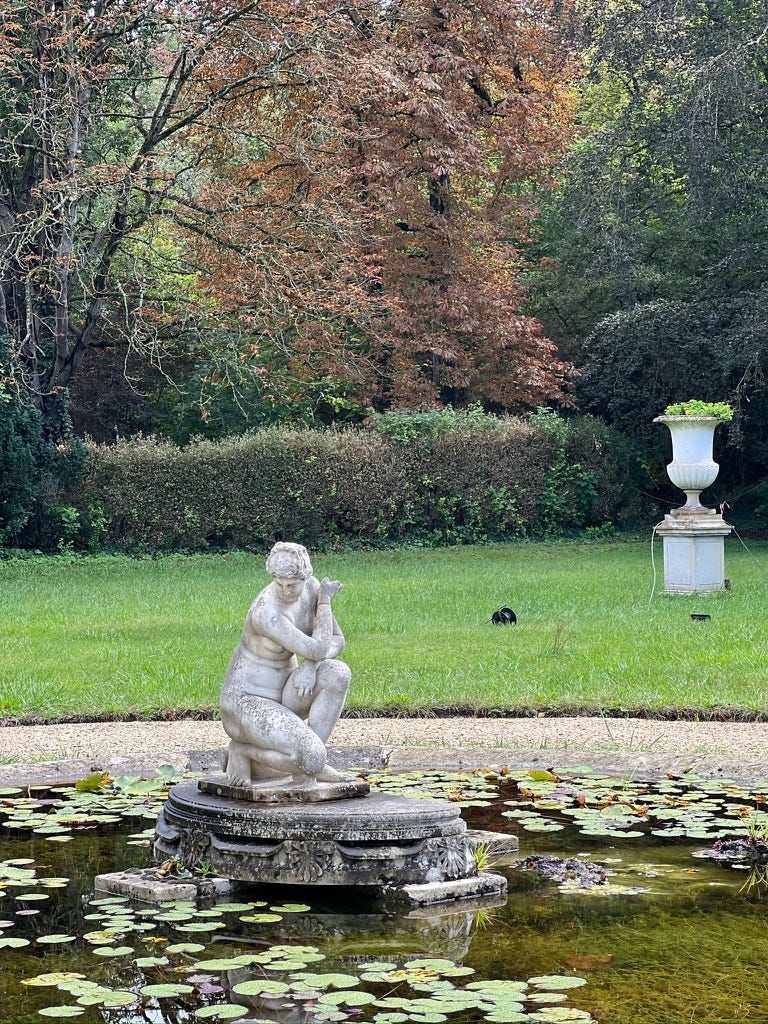
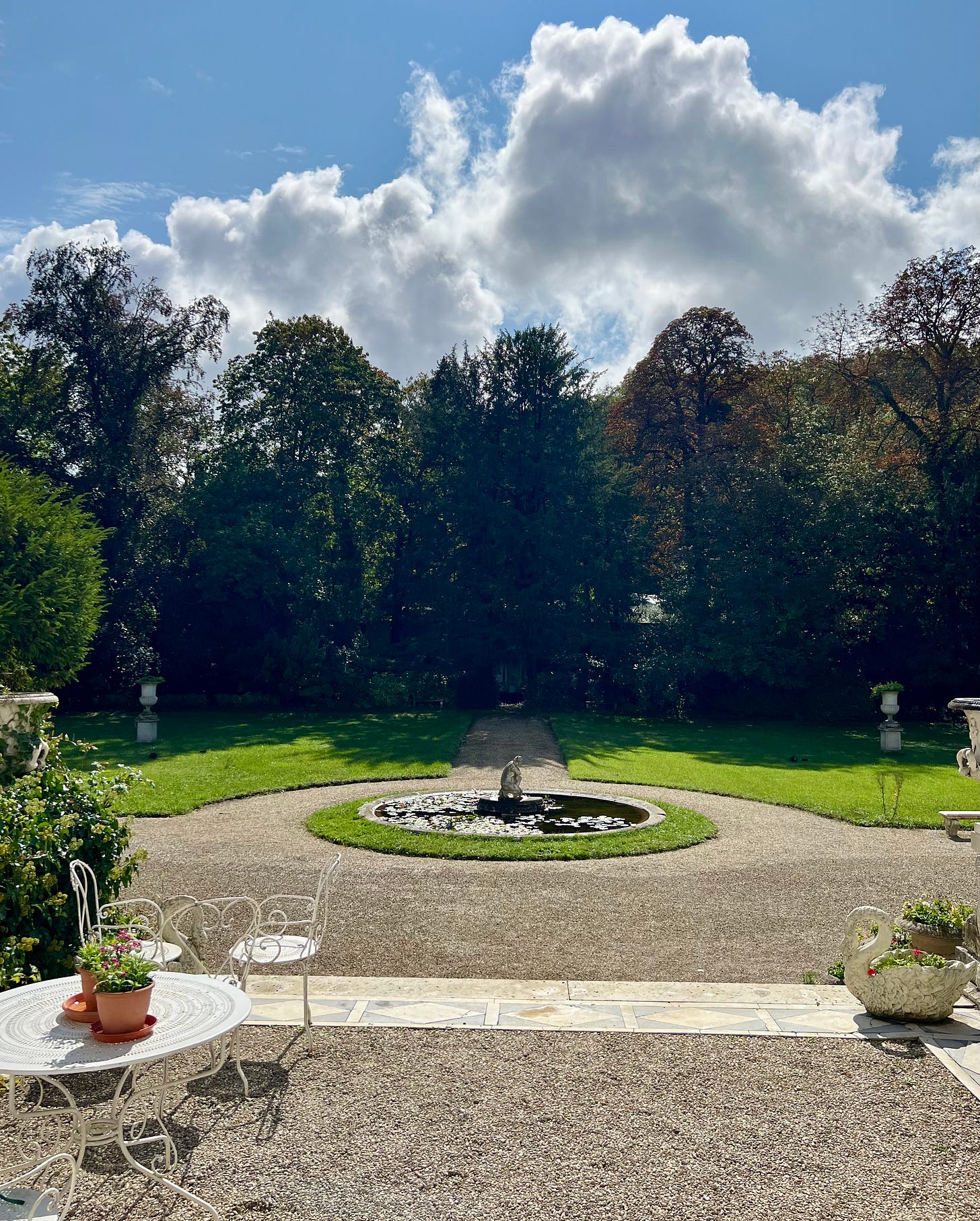


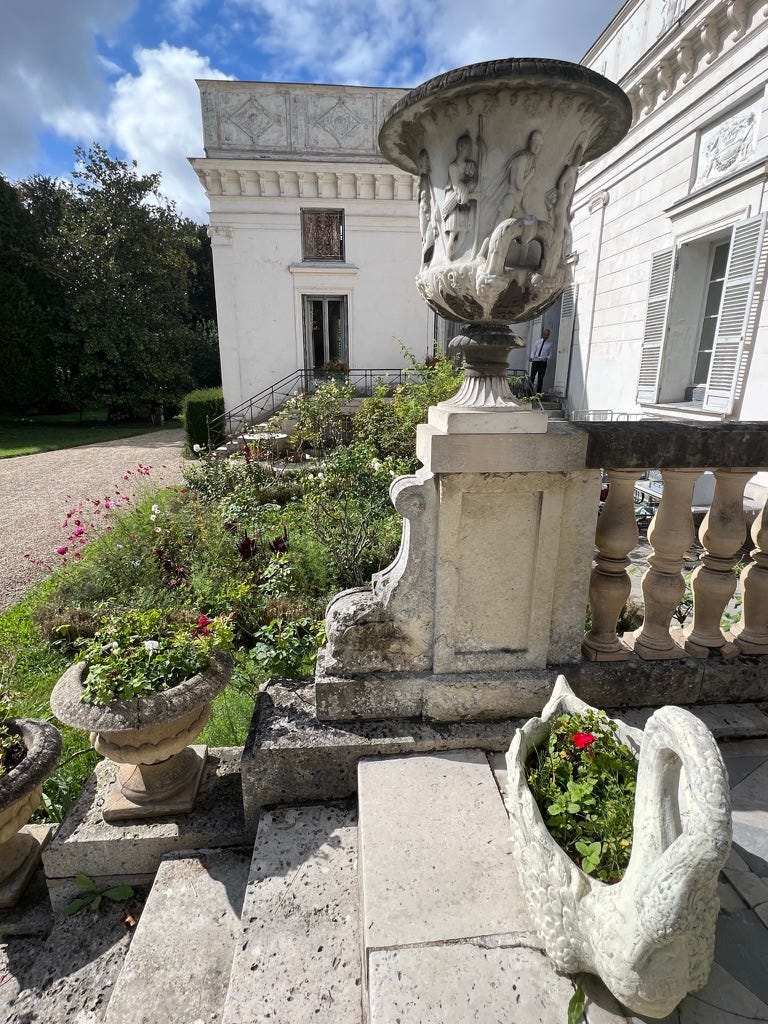

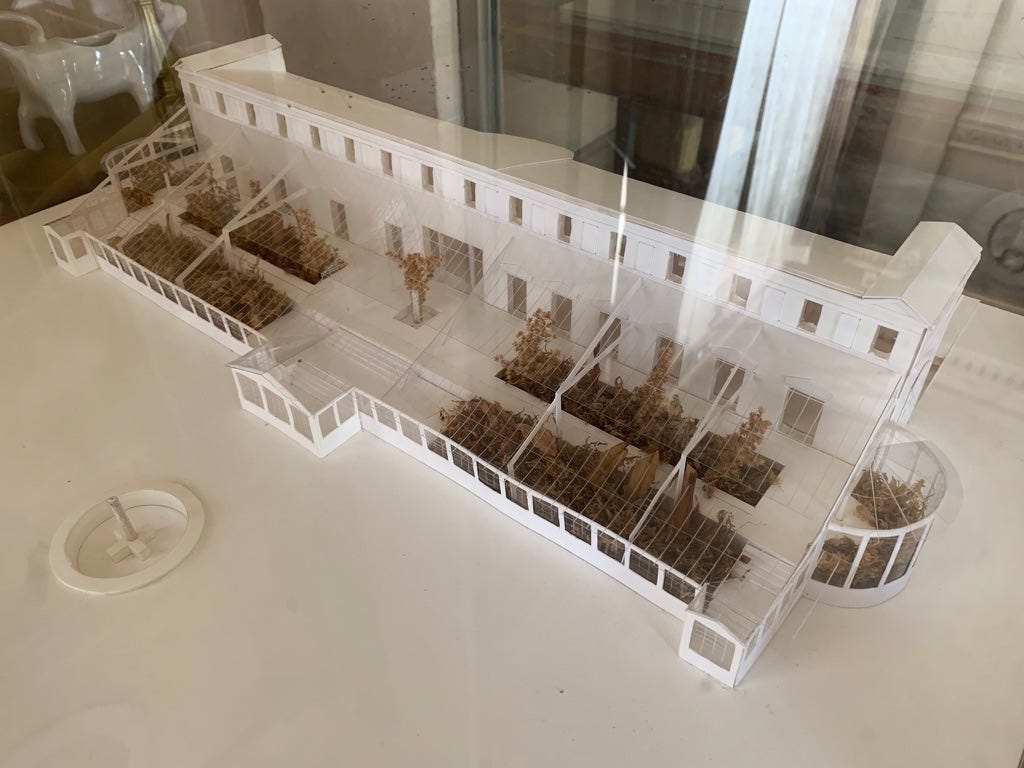





What a wonderful experience! Not sure why it never occurred to me before despite years of reading about your trips with The Decorative Arts Trust to look into the organization. There is one near me! How fun!
You are an inspiration!
Thanks for this introduction to a house I wasn't aware of. As always, I enjoy both your words and your photos in equal measure.